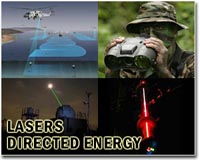 |
Champaign IL (SPX) May 17, 2010 While the laws of physics weren't made to be broken, sometimes they need revision. A major current law has been rewritten thanks to the three-port transistor laser, developed by Milton Feng and Nick Holonyak Jr. at the University of Illinois. With the transistor laser, researchers can explore the behavior of photons, electrons and semiconductors. The device could shape the future of high-speed signal processing, integrated circuits, optical communications, supercomputing and other applications. However, harnessing these capabilities hinges on a clear understanding of the physics of the device, and data the transistor laser generated did not fit neatly within established circuit laws governing electrical currents. "We were puzzled," said Feng, the Holonyak Chair Professor of Electrical and Computer Engineering. "How did that work? Is it violating Kirchhoff's law? How can the law accommodate a further output signal, a photon or optical signal?" Kirchhoff's current law, described by Gustav Kirchhoff in 1845, states charge input at a node is equal to the charge output. In other words, all the electrical energy going in must go out again. On a basic bipolar transistor, with ports for electrical input and output, the law applies straightforwardly. The transistor laser adds a third port for optical output, emitting light. This posed a conundrum for researchers working with the laser: How were they to apply the laws of conservation of charge and conservation of energy with two forms of energy output? "The optical signal is connected and related to the electrical signals, but until now it's been dismissed in a transistor," said Holonyak, the John Bardeen Chair Professor of Electrical and Computer Engineering and Physics at the U. of I. "Kirchhoff's law takes care of balancing the charge, but it doesn't take care of balancing the energies. The question is, how do you put it all together, and represent it in circuit language?" The unique properties of the transistor laser required Holonyak, Feng and graduate student Han Wui Then to re-examine and modify the law to account for photon particles as well as electrons, effectively expanding it from a current law to a current-energy law. They published their model and supporting data in the Journal of Applied Physics, available online May 10. "The previous law had to do with the particles - electrons coming out at a given point. But it was never about energy conservation as it was normally known and used," Feng said. "This is the first time we see how energy is involved in the conservation process." Simulations based on the modified law fit data collected from the transistor laser, allowing researchers to predict the bandwidth, speed and other properties for integrated circuits, according to Feng. With accurate simulations, the team can continue exploring applications in integrated circuits and supercomputing. "This fits so well, it's amazing," Feng said. "The microwave transistor laser model is very accurate for predicting frequency-dependent electrical and optical properties. The experimental data are very convincing."
Share This Article With Planet Earth
Related Links University of Illinois Space Technology News - Applications and Research
 Making light work: The 50-year odyssey of the laser
Making light work: The 50-year odyssey of the laserParis (AFP) May 12, 2010 Fifty years ago next Sunday, a 32-year-old engineer called Theodore Maiman switched on a gadget at Hughes Research Laboratories in California, and watched as pulses of light sprang from a pink ruby crystal. It was a geek eureka: the moment when the laser was born. And the world would change forever. But not just yet. When Maiman's great invention was announced, the response was essential ... read more |
|
| The content herein, unless otherwise known to be public domain, are Copyright 1995-2010 - SpaceDaily. AFP and UPI Wire Stories are copyright Agence France-Presse and United Press International. ESA Portal Reports are copyright European Space Agency. All NASA sourced material is public domain. Additional copyrights may apply in whole or part to other bona fide parties. Advertising does not imply endorsement,agreement or approval of any opinions, statements or information provided by SpaceDaily on any Web page published or hosted by SpaceDaily. Privacy Statement |